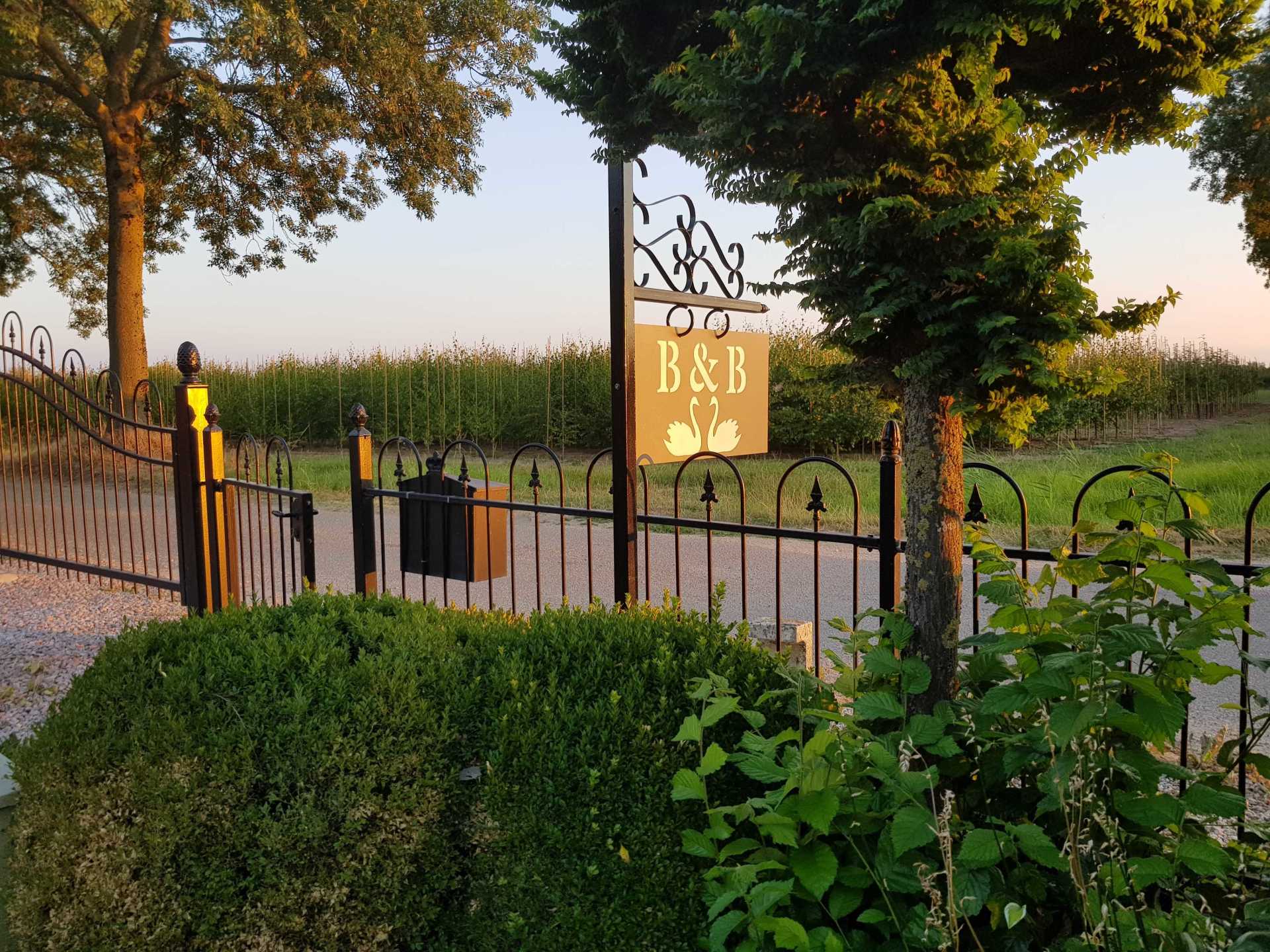Natural areas
The following nature reserves are a short distance from the B&B:
- Lienden (2 km)
Reserve along the banks of the Oude Rijn with reed, grassland, deciduous forests and the Oude Rijndijk. The (inner) dike and the riparian areas are among the more interesting parts of the river area in terms of vegetation. The swampy area is home to many amphibians and birds such as kingfisher and bittern - Grebbeberg and Lorseleberg (5 km)
The Grebbeberg forms the abrupt end of the Utrechtse Heuvelrug. Due to the height of 50 meters above sea level, you have a unique view over the Neder-Rijn with the floodplain the floodplain, especially from the Koningstafel, near the old Blue Room and the flat Betuwe. The Grebbeberg is predominantly wooded with oaks.
The Lorseleberg is located north of the provincial road and consists of deciduous forest, some coniferous forest and fields. It offers a view of the Gelderse Valley further east
Location: municipality of Rhenen; adjacent to Ouwehands Zoo, entrance at the Cemetery of Honor on the Grebbeberg. - Blue Room(7 km) (click for more information)
In the Blue Room nature reserve, the water of the Lower Rhine has free rein. The summer dike was excavated in 1992, so that the area is regularly flooded. Nature in the Blue Room is constantly evolving and evolving thanks to the floods.
The dynamicsof the river creates height differences and attracts special plants and animals. Flowery vegetation gives the Blue Room color. Willow forests are growing in various places and swamps have emerged. One of the willow forests is home to a large colony of spoonbills, one of the more than 70 species of breeding birds in the area. The flora is rich and sometimes consists of species that were previously unknown from the river area, such as the beautiful centaury. The beaver also feels at home in the Blue Room.
Bird paradise
The Blue Room is a true paradise for bird watchers. The bird hide offers a view over the bird rest area. Spoonbills, egrets and cormorants are regularly seen. Those who are lucky can even get an osprey in front of the lens.
Galloways and Koniks
In the area, semi-wild Galloways and Koniks roam freely in herds. Galloways are cattle and koniks are horses. Keep your distance and do not feed the animals. They can take good care of themselves, even in winter. At high tide, they seek shelter in higher areas. There hawthorn and dog rose spread because they are not eaten by the animals. Here and there a young ash gets the chance to grow into an adult tree between the thorn bushes.
The floodplain is partially accessible via a marked walking route, which leads to the bird observation hut De Blauwe Kijk, among other things.
Location: Route: N225 in the direction of Wageningen: at the bottom of Grebbeberg turn right onto the Grebbedijk, to the ferry of Opheusden. Take the first exit to the right of the dike, follow this road to the information center. You can park here.
- Wageningen Floodplains (9 km)
Floodplains that have largely lost their original relief under the influence of the brick industry.
Brickworks De Bovenste Polder
You will find silent witnesses to industrial history amidst the landscape of rivers and floodplains in the Rhine valley. Here is the De Bovenste Polder brick factory, the only remaining factory of the 8 factories that were active near Wageningen at the beginning of the last century. The brick industry was the most important source of work alongside printing and the tobacco industry. Today, the De Bovenste Polder grounds are home to studios for artists, a caretaker's house, rehearsal rooms for pop musicians, canoe stables and a scouting group.
Location: Municipality of Wageningen, along the Rhine, south of Wageningen. - Mountain ridge on the flank of the Wageningseberg (15 km)
When you walk along the mountain ridge on the south side of the Botanical Garden Belmonte, you will be surprised by beautiful views. Here you can enjoy the view over the Lower Rhine, with the characteristic Betuwe country on the other side: the dikes, the meadows with pollard willows and the farms. In clear weather you can see up to the Waalstad Nijmegen.
Location: Municipality of Wageningen, south of the N225 Wageningen - Renkum. - Hemmen (15 km)
Landgoed Hemmen has a long history. From the 14th century, there was a large moated castle on the site where the ruin is now visible. In 1757, a stately country house "Huis Hemmen" was built on the old foundations of the former castle, which was destroyed in 1945 during the Second World War. Now all around the ruin of “the house” and in the middle of 350 ha. land with woods, orchards and meadows to see a beautiful park in English Landscape style.






